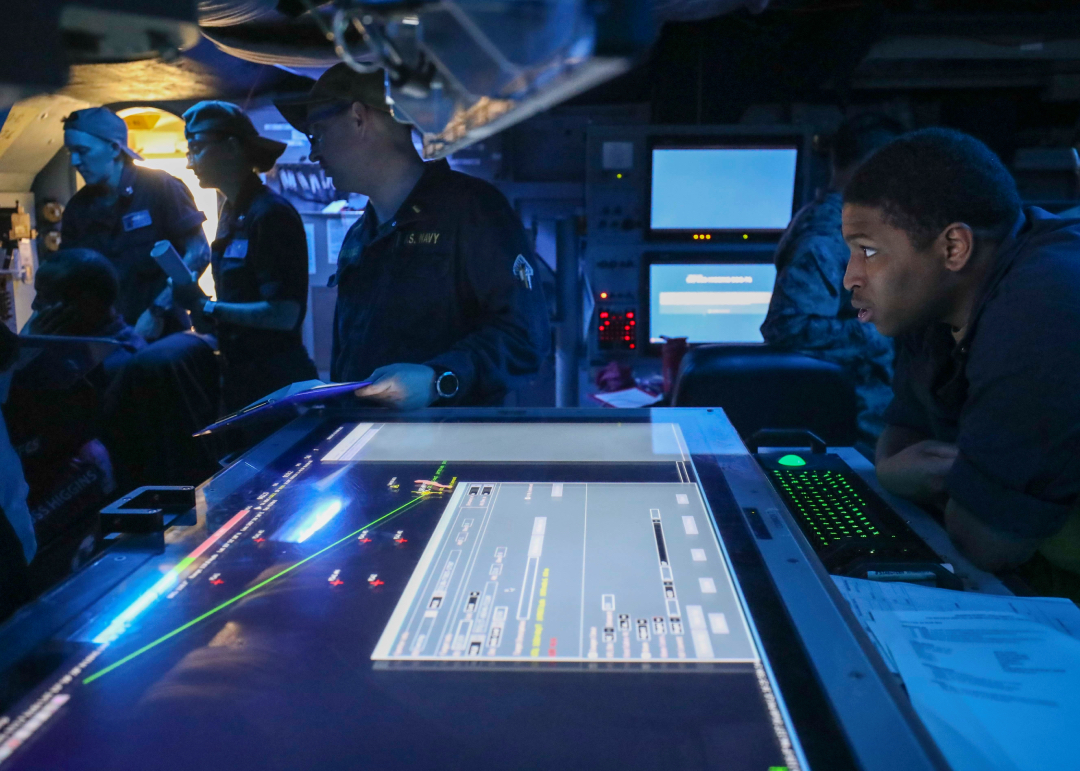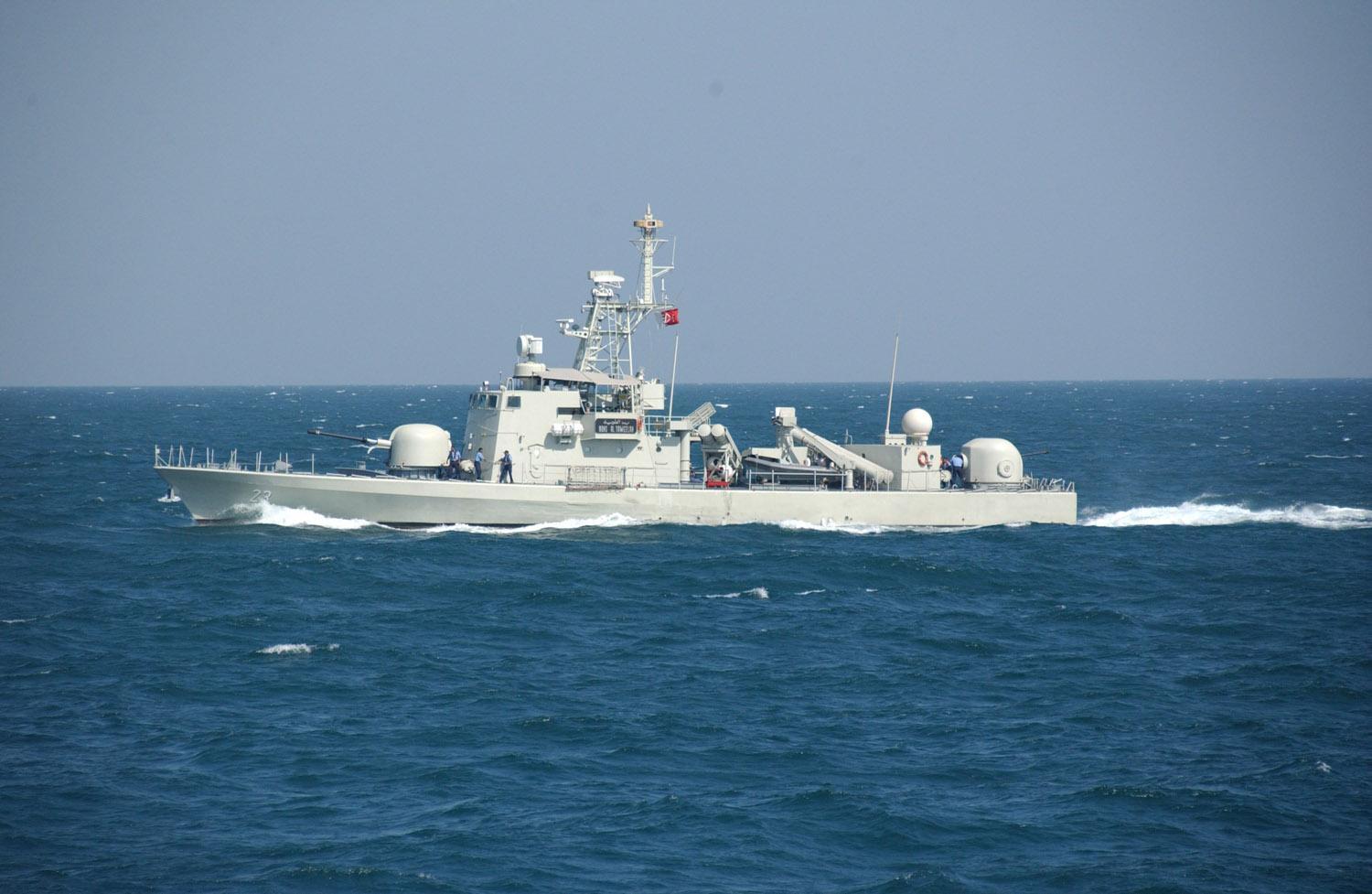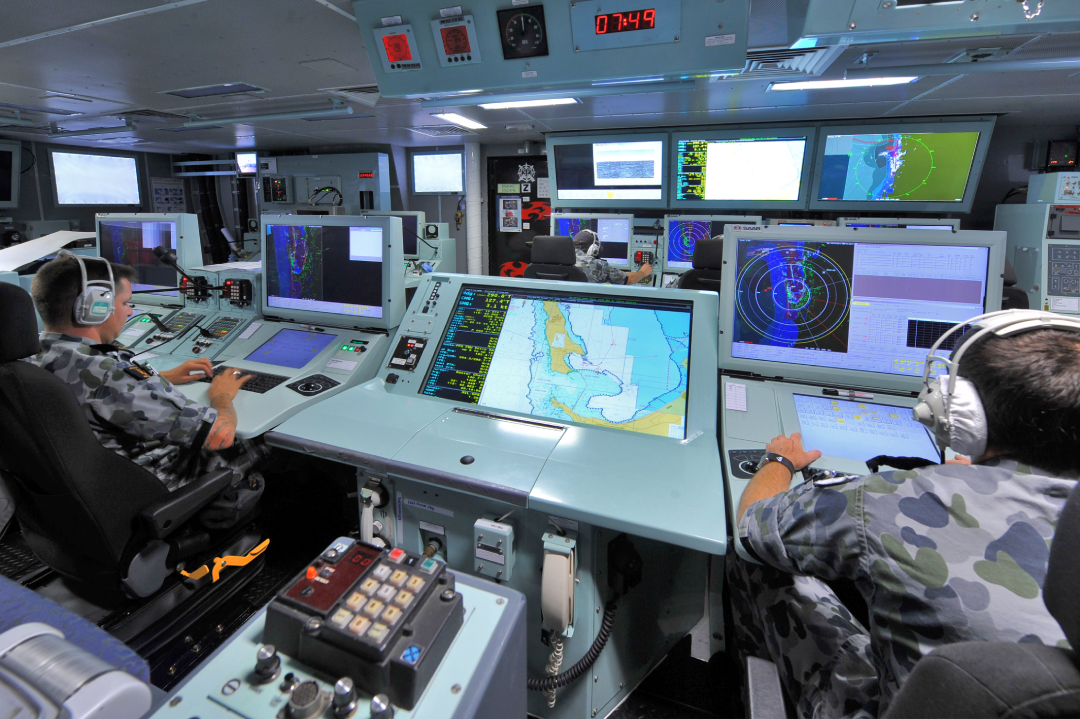
A combat management system (CMS) is as essential in a modern warship as any of the platform’s sensors and weapons.
Discussion of naval ship and submarine capabilities often focuses on the sensors and effectors the platforms carry. Equally important onboard any platform, however, is and always has been the combat management system (CMS).
In the modern – and likely future – operational environment at sea, the role of the CMS is likely to become even more pronounced. As navies, their joint and combined force partners, and senior military and political decision makers become more focused on the rapid and effective use of the increasing amounts of data naval platforms are bringing onboard, the outputs of a CMS will have greater impact.
Such impact can be quantified in several ways. For example, a CMS must integrate with other systems onboard and with other platforms, and must process and disseminate data to ensure the right effects are delivered by the right platforms at the right place and time. A CMS must also be integrated with emerging technologies like autonomy and artificial intelligence (AI), to enable the more rapid and efficient processing and disseminating of such data. Emerging technologies like autonomy and AI are critical in alleviating the processing and disseminating pressure building on the human operator because of the increasing amounts of data being brought onboard, and thus in allowing the operator to focus on decision making and operational outputs.
Given the importance of the CMS in contemporary naval operations, it is thus no surprise that highly capable CMS systems are in much demand by navies; it is no surprise either that CMS systems are appearing more centrally in discussions about platform capability requirements. Given the increased focus on effective use of data, procuring the right CMS is at the heart of every discussion regarding every ship type, from aircraft carriers down to patrol vessels.
Aegis at heart
For a major navy like the US Navy (USN), its major platforms are dominated by a major CMS – in the USN’s case, Lockheed Martin’s Aegis combat system. Aegis has been developed now up to Baseline 10. The USN’s first Flight III DDG 51 Arleigh Burke-class guided-missile destroyer USS Jack H Lucas, which was launched in June 2021, is fitted to Aegis Baseline 10 standard. The Flight III Arleigh Burkes require a CMS of such an advanced standard in order to rapidly process and disseminate the high levels of data they will bring in to meet their core task of integrated air and missile defence (IAMD) – a task of increased significance in contemporary and likely future naval combat requirements.
However, as naval operations in both the Euro-Atlantic and Indo-Pacific theatres return to a focus on high-end warfare, so there is an increasing requirement to generate the kinds of CMS capabilities and outputs habitually available to larger platforms for smaller platforms as well.
Lockheed Martin’s COMBATSS-21 CMS is a core example of the development of a CMS designed to provide a capability similar to Aegis, but one that can be fitted to smaller platforms and even connected into Aegis itself.
On 21 May 2022, the USN’s latest Freedom-class Littoral Combat Ship (LCS) was commissioned into service. The Freedom-class LCS platforms carry COMBATSS-21 as their CMS.
Some analysts see COMBATSS-21 as a ‘lighter’ version of Aegis, scaled for use onboard smaller ships. Crucially, however, as Lockheed Martin derived COMBATSS-21 directly from Aegis, the software make-up of COMBATSS-21 is closely linked and closely integrated to that of Aegis, especially through use of the Common Source Library (CSL).
In developing a contemporary CMS capability, the software within the CMS is far more important than the physical hardware of consoles bolted into a platform’s combat information centre. Thus, COMBATSS-21 is designed almost as a sub-set of Aegis, a CMS capability that can be integrated easily with the software and data generated by its Aegis ‘big brother’.

Open architecture
A central component of COMBATSS-21’s design is an open architecture construct. This enables CMS capabilities to be tailored in the first instance for the platform in question, and then for subsequent software upgrades to be integrated seamlessly. Central to integrating COMBATSS-21 with Aegis is access to the CSL. According to Lockheed Martin, CSL is “a software repository that allows for sharing and re-use of code – without an additional cost. This way, when software is developed, debugged, or upgraded, it can quickly be released across a fleet, similar to how smartphones receive app updates”.
“Instead of developing new code, COMBATSS-21 brings existing code from an Aegis ship into a smaller ship. Because the navy has already invested in Aegis, using COMBATSS-21 reduces cost for integration, test, and certification by eliminating redundancies,” Lockheed Martin stated.
COMBATSS-21 was developed originally for the Freedom-class LCSs. With LCS designed to be forward deployed, rapidly engaged, and flexibly used, a CMS that is quick in its processes and adaptable in its outputs is integral to the LCS concept. The commonality in software between Aegis and COMBATSS-21 reduces development, testing, integration, operational, and maintenance costs, and means that sailors – for example, in the case of the USN – can switch from Arleigh Burke destroyers to Freedom LCSs while having inherent familiarity with both CMS systems.
The utility of the Freedom-class LCS capability, including that of its COMBATSS-21 CMS, was demonstrated in mid-2022 when fifth-in-class Freedom LCS vessel USS Sioux City conducted a five-month deployment to the Euro-Atlantic theatre and beyond into the Middle East. Operating under US Sixth Fleet and US Fifth Fleet command, USS Sioux City was the first Freedom-class LCS to operate in these theatres. In the case of operating under US Fifth Fleet, USS Sioux City supported the USN-led Combined Maritime Forces’ (CMF) multinational Combined Task Force (CTF) 153, which operates from the Red Sea down to the Gulf of Aden.
The ship was able to clearly demonstrate its adaptability. Vice Admiral Brad Cooper, Commander US Fifth Fleet and Commander CMF, pointed to the ship’s ability to integrate immediately and seamlessly into CTF 153.
Integrated intelligence
One company looking to develop a robust role for AI in its CMS is BAE Systems, with its INTeACT product. INTeACT builds upon BAE Systems’ DNA/CMS-1 CMS, which is installed in a wide variety and number of UK Royal Navy (RN) surface ships – including from aircraft carriers to patrol vessels.
Alongside integrating AI within the system, INTeACT is also designed around an open architecture software construct. Emphasising the focus on integrating software in enabling CMS output, INTeACT uses what BAE Systems refers to as a software development kit (SDK).
In a June 2022 update on INTeACT and SDK development, the company stated “The SDK offers open interfaces and emulation tools allowing software engineers to develop their own applications that can integrate with open CMSs such as INTeACT.”
SDK also brings, at this stage, a particular capability focus. “Initially aimed at applications dealing with tactical picture visualisation, track correlation, and track identity recommendations, the SDK consists of a collection of open interfaces and components supported by tutorials and API [application programming interface] documentation,” BAE Systems added.
The SDK approach is designed to shorten and de-risk software integration processes onboard platforms and with other CMS systems, the company added. SDK also allows third parties to create software applications that can be integrated into in-service ships.
On the latter aspect, in May 2022 BAE Systems and the RN hosted an ‘INTeACT SDK Codeathon’ in London, at which third-party teams brought different application ideas to test prospective integration into INTeACT through SDK.
In the June 2022 update, BAE Systems noted that “Development on the next release of the SDK is well under way.” It added that this release, INTeACT v2.2, was planned for the second half of 2022.
European CMS
Leonardo’s Athena (Architecture & Technologies Handling Electronic Naval Applications) is designed to handle increasing quantities of data into Concepts of Operations (CONOPS) as they develop. It can be used across all types of naval ships, from patrol boats through to aircraft carriers.

It is based on scalable architecture that increasingly includes command and control (C2) capabilities to manage a broader range of threats, including threat such as over the horizon hypersonic missiles. Information on threats from onboard and, crucially, off-board sensors need to be managed and shared to deploy a countermeasure in whatever form that will take.
In April, Leonardo completed the upgrade of the sixth and final Royal Bahrain Navy Ahmed Al Fateh-class guided-missile vessel Al Taweelah. This represented the completion of an upgrade order worth $50 million that was awarded in 2015.

Thales’ TACTICOS mature combat management system supports mission systems including sensor control, picture compilation, situation assessment, action support and weapon control. According to the company
The TACTICOS has recently been selected for the Polish Navy’s new Miecznik (Swordfish) frigate procurement programme, which will be produced to Babcock’s Arrowhead-140PL design. The Polish Navy already operates with TACTICOS as do 24 other international naval customers, according to Thales.
The UK’s Royal Navy has also selected TACTICOS for its new general purpose, multi-role Type 31 frigates, which again is to be based on the Arrowhead-140 design, and which will replace the existing Type 23s. Five Type-31s are planned, to be known as the Inspiration-class, the first vessel to be laid down being HMS Venturer. The Royal Navy will work with Thales as the mission system integrator to shape its own version of TACTICOS.

Saab says that its mature 9LV CMS system can be integrated with any subsystem or weapons selected by the customer, whether developed by Saab or a third party supplier.
The 9LV can trace its development back to the late 1960s, and is now on the Mark 4 version which is used by several naval customers including on the Swedish Visby-class corvettes and the Canadian Halifax-class frigates. It combines support for three dimensional warfare – air, surface and sub-surface.
The company has just been confirmed as the local provider of Combat Management Systems (CMS) for the Surface Fleet of the Royal Australian Navy (RAN) after the signing of the final phase of the Enterprise Partnering Agreement (EPA). Saab will install the Australian CMS (AusCMS) onto the RAN’s six different classes of surface warship fleet.

“As a key part of the Government’s enterprise approach to shipbuilding, realisation of the EPA will see Saab’s AusCMS equip up to six classes of warships in the surface fleet, along with developing the Australian Interface for the Hunter and Hobart classes,” said Saab Australia’s managing director, Andy Keough.
by Dr Lee Willett












